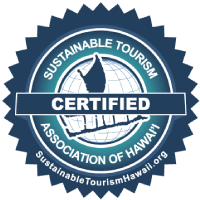Top 10 Snorkel Spots on Big Island Hawaii
The Big Island of Hawai’i holds arguably some of the best snorkeling sites in all of the Hawaiian Islands. The shoreline on the western side of the island (Kona side) is comprised of many sheltered volcanic bays, where corals, reef fish, and larger marine life thrive! Known globally for the exciting opportunity to swim with manta rays at night, this is a once in a lifetime opportunity to revel at one of nature’s gentlest giants. Don’t miss out on daytime explorations into many other exceptional snorkeling sites that Big Island has to offer!
1. Manta Ray Night Snorkel
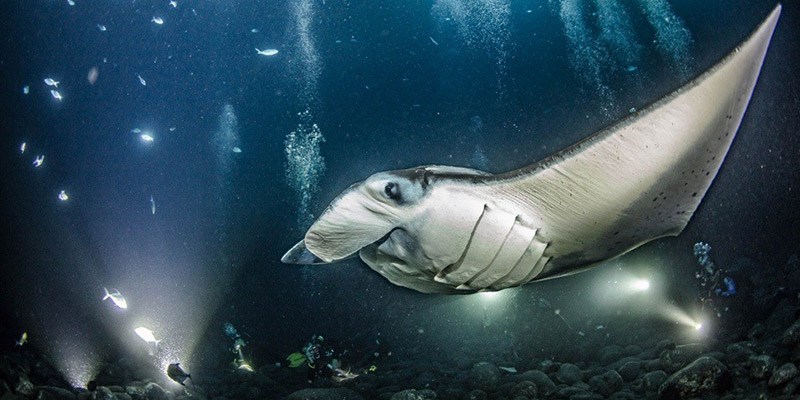
Manta Village is undoubtedly the main draw for nature lovers to the waters around Kailua-Kona, to swim with the incredible manta rays. The species frequently seen in Hawaiian waters is Manta alfredi, reef manta rays, and are the second largest species of manta rays on the planet! Mantas are filter feeders, feeding on plankton that they sieve out into their large mouths. The group that lives off the coast of Kona does not migrate and lives permanently in these tropical waters.
Around sunset, boats leave the harbors in Kona and typically travel to one of two sites deemed “Manta Village” and “Manta Heaven.” When arriving, boats shine lights into the water and set up giant rafts with floodlights that point down into the waters. The light attracts the diurnal plankton to the surface, this way drawing groups of manta rays to come and feed on their nightly snack. Snorkelers hold on to the sides of these rafts and gaze below as these gentle giants swim and turn in circles to feast on this plankton soup. It is a truly magnificent experience and sight to behold. Make this your top priority when visiting the Big Island!
Fair Wind offers daily trips to Manta Village from Keauhou Bay around sunset, the trip taking about 1.5 hours in total.
Fun fact
The wingspan of these manta rays can reach up to 18 feet!
2. Kealakekua Bay (Captain Cook)
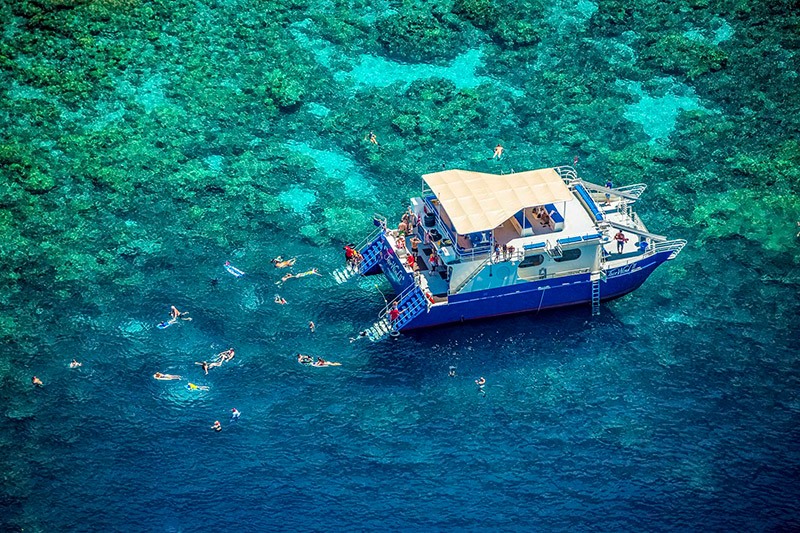
Kealakekua Bay is Big Island’s only underwater state park and is one of the most excellent places to snorkel in all of Hawaii! It’s a bit difficult to access from land, as the parking is 1.9 miles away from the bay, requiring a long hike down to the water in the hot sun, which you will have to climb back up when you are finished with your visit. The easiest way to access the bay is via boat, allowing you to see the beautiful coastline from the water and ensuring that you can experience the best snorkel spots in the bay. Check out the boat cruises offered by Fair Wind out of Keauhou Bay, which include snorkel gear, snacks, refreshments, and a considerable amount of interesting cultural, historical, and essential information about the bay. Another option is to rent a kayak, with a permit, and paddle out to the farther reaches of the bay to snorkel. This site boasts excellent visibility and commonly features spinner dolphins, sea turtles, lizard fish, eels, and beautiful corals.
Kealakekua Bay is considered a sacred site to native Hawaiians and was the location where Captain Cook made landfall for the second time in Hawai’i during the makahiki festival. The celebration is of Lono, the fertility god, whom Captain Cook was mistaken for when his ships with white sails came into the bay, looking incredibly similar to the white kapa banners flown on crossbars that symbolize the god! Cook was showered with gifts for two weeks before setting sail out of Hawai’i. After the makahiki festival, a kapu, or prohibition, had been placed on the bay, and when Cook encountered a fierce storm, he and his crew were forced to return to the bay. The Hawaiians were disenchanted with his return, believing that no god would encounter defeat in his own domain, the sea and helped themselves to coveted metals from his ships in exchange for all of the supplies they had willingly given to this false god. To retaliate, Cook took nine sailors ashore in an attempt to capture Chief Kalaniopuu to force the return of his goods, but a battle occurred resulting in the death of Cook and four of his men on February 14, 1779. The British erected the Captain Cook Monument to honor him in the place that he died.
Interesting fact
Captain Cook Monument was built by the British in the place that Captain Cook was killed after being mistaken for the Hawaiian god Lono.
3. Honaunau Bay (Two Steps)
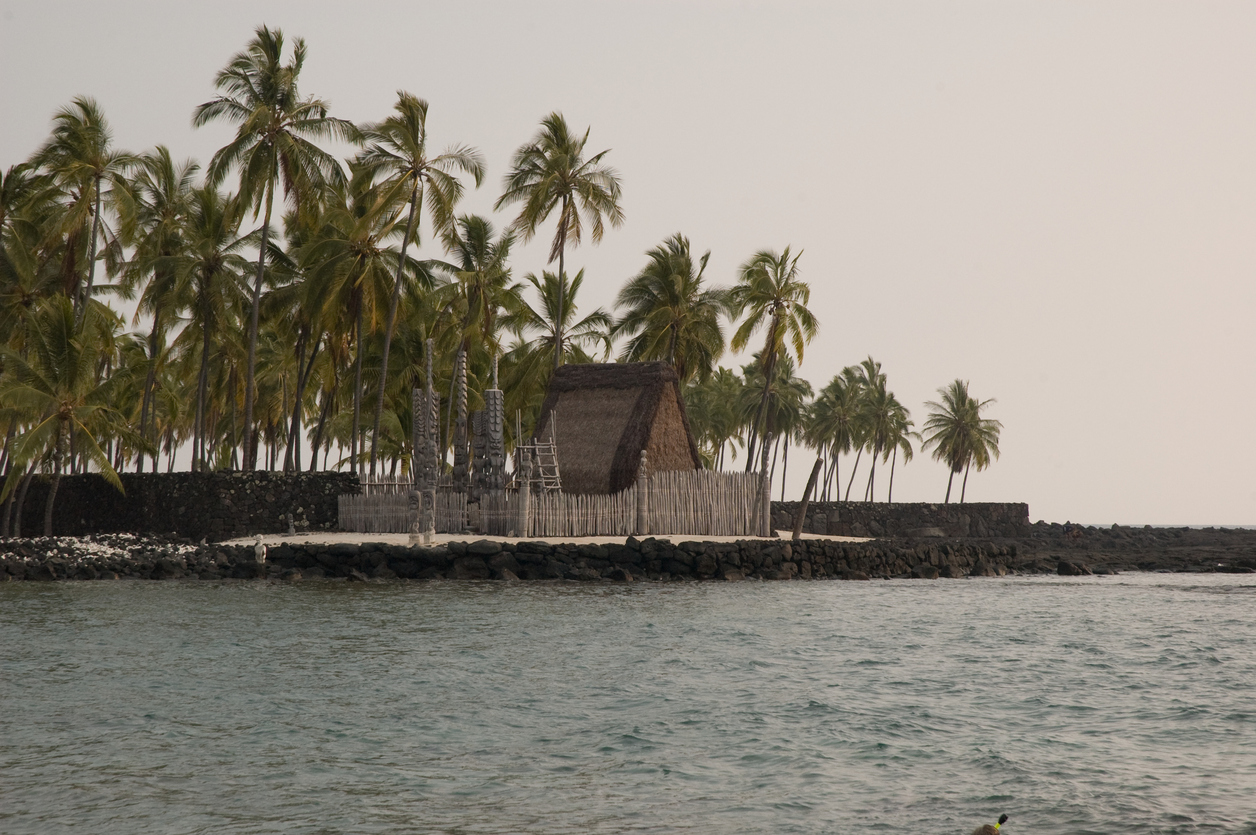
With coral and sea life in abundance, Honaunau Bay is a fantastic place to explore! This site is well known for its clear waters (up to 100-foot visibility) and was named “America’s Best Beach” in 2004. On the left side of this bay is the 182-acre Pu’uhonua O Honaunau National Historical Park, where the name Honaunau is derived and is worth walking through to see a preserved ancient Hawaiian village. This was a place of refuge for Hawaiians that had broken the kapu, or sacred laws, that were punishable by death. Once reaching the boundaries of Pu’uhonua, one was safe and protected. The name even translates to “City of Refuge.”
The entrance into the bay isn’t from a beach, but instead out over the farthest reach of lava rock. Wear slippers and walk out over to the center of the lava rock (other people will likely be gathered here) to access the lava rock “steps” into the water. Once in the water, there is a shallow area for beginner snorkelers towards the shore where coral heads are in about 6-10 feet of water. One can spot many types of fish and maybe even an octopus! Further out, there is a deep sandy area with a patch of cement blocks that someone has shaped to spell out “ALOHA.” If you are a more experienced snorkeler, go to the left of where you entered to explore coral reef canyons, channels, and walls (around 30 ft depth) where honu, or sea turtles, tend to be spotted. Exercise caution when entering and exiting the water as surge waves can occur. Also, the seafloor does drop out rapidly to about 100 feet, so keep your eyes on the reef!
Fun fact
Hawaiian spinner dolphins are known to rest in this area in the bay and can be best sighted in the early morning!
Interesting fact
The site was named “Two Steps” due to the two rock steps that you will use to enter the water!
4. Mauna Kea Beach, Kauna’oa Bay
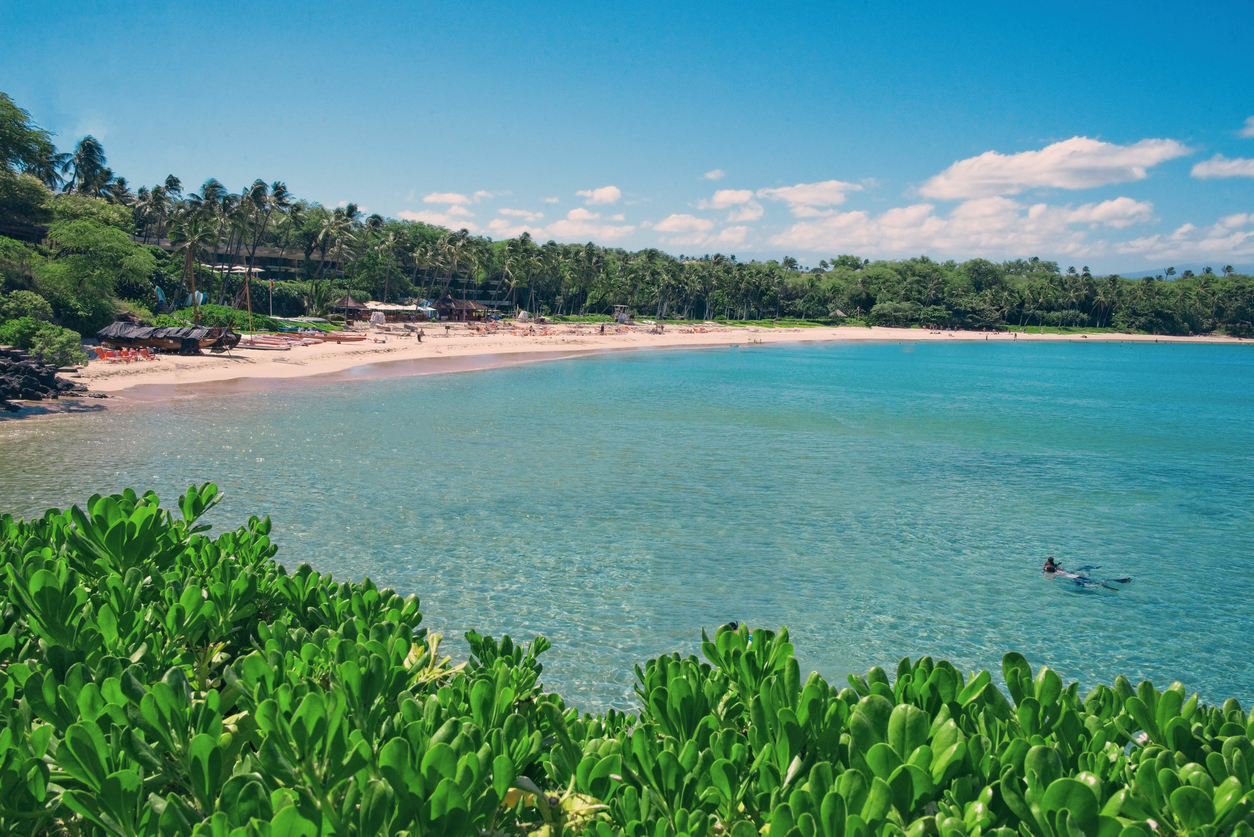
Recognized for its white sands and possibility of manta ray sightings, this is a sight you shouldn’t miss! Kauna’oa Bay holds the Mauna Kea Beach Hotel, which is where the name is derived. The public beach access is through the hotel gate, where you can receive a parking pass, but we recommend arriving early as space tends to be limited with only 10 parking spaces! When the conditions are good, visibility and snorkeling can be fantastic. Enter the water from either side of the bay near the rocky points through the sand, then swim out past the shallow corals to access stunningly beautiful reefs teeming with life.
This is another location to spot manta rays! The Mauna Kea Beach Hotel shines bright lights into the water in the evening to attract plankton, and often manta rays do come to feed. Hop in the water around “Manta Ray Point” just after sunset for a chance to see these magnificent creatures. Please, be extra careful at night and keep an eye on the shore.
Fun fact
Mauna Kea Beach was named one of “The World’s All Time Best Beaches” by Travel Channel, rightfully deserves the recognition with its stunning white sand beach!
5. Kahalu’u Beach Park
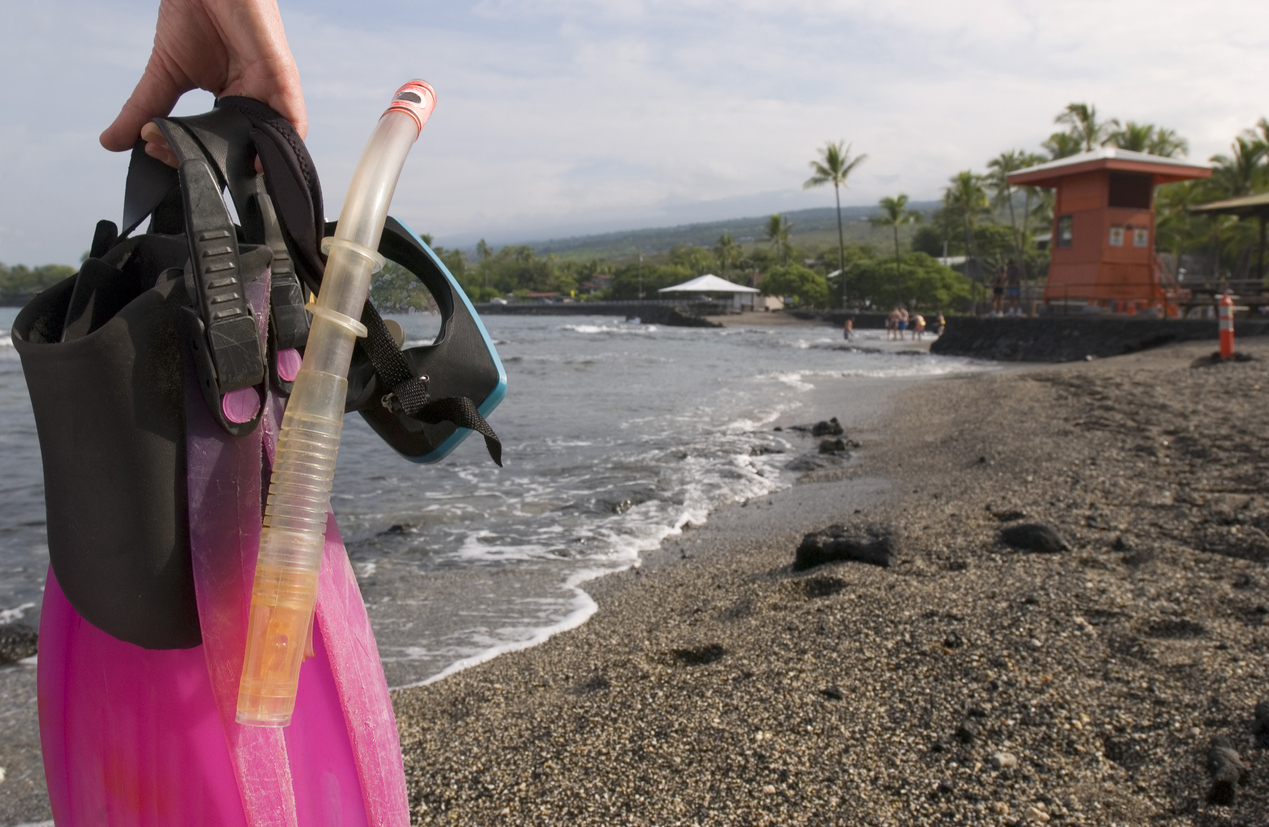 Kahalu’u Beach Park is a fantastic place for beginner snorkelers because there is a lifeguard on duty and has easily accessible, shallow, and sheltered waters. There is an excellent concentration of fish, as well as tide pools to explore! Kahalu’u Bay is famed for the honu, sea turtles, that frequent the bay, feeding on limu, seaweed, and sunning themselves on the rocks. When snorkeling, stick to the left side of the bay, as surfers use the spot as well when swells roll in. The park is proud to support the ReefTeach Program with volunteers to educate the public on how to take care of honu, other reef animals and tips to avoid damaging corals.
Kahalu’u Beach Park is a fantastic place for beginner snorkelers because there is a lifeguard on duty and has easily accessible, shallow, and sheltered waters. There is an excellent concentration of fish, as well as tide pools to explore! Kahalu’u Bay is famed for the honu, sea turtles, that frequent the bay, feeding on limu, seaweed, and sunning themselves on the rocks. When snorkeling, stick to the left side of the bay, as surfers use the spot as well when swells roll in. The park is proud to support the ReefTeach Program with volunteers to educate the public on how to take care of honu, other reef animals and tips to avoid damaging corals.
Interesting fact
Sea turtles are endangered so please don’t touch because it is illegal in Hawai’i. They are protected under the Endangered Species Act!
6. Hapuna Beach

Hapuna Beach is one of the most beautiful white sand beaches on the Big Island and is usually sunny! There is a lifeguard on duty year-round, making it a good beach for families. With that being said, it is a very popular spot and has limited parking so go early. The beach itself is more exposed than other sites, making it apt to higher wave action and lower visibility. That coupled with a long swim to the coral reefs at either end of the beach make this site more suitable for advanced snorkelers. Most of the locations around Kohala have the best conditions for snorkeling in the morning. The north (right) end of the beach has more to see in the shallows once you swim out to the corals, with turtles and fish frequenting the waters along the rocky walls and canyons. The south (left) end of the beach also requires a long swim out to the corals, where there is a small bay that holds lots of fantastic coral formations and fish. You will be out of sight of the lifeguards here, so please be safe and turn back before you are tired.
SAFETY: Once you get closer to the point on either side of the bay, currents and surges will become stronger, and it can be dangerous if you aren’t prepared for those conditions or become fatigued. Stay in shallower waters and always go with a buddy. Even capable swimmers can get tired and run into trouble in deeper waters.
Fun fact
Hapuna Beach stretches over a half mile long and features two snorkel sites on either end!
7. Waialea Bay (Beach 69)
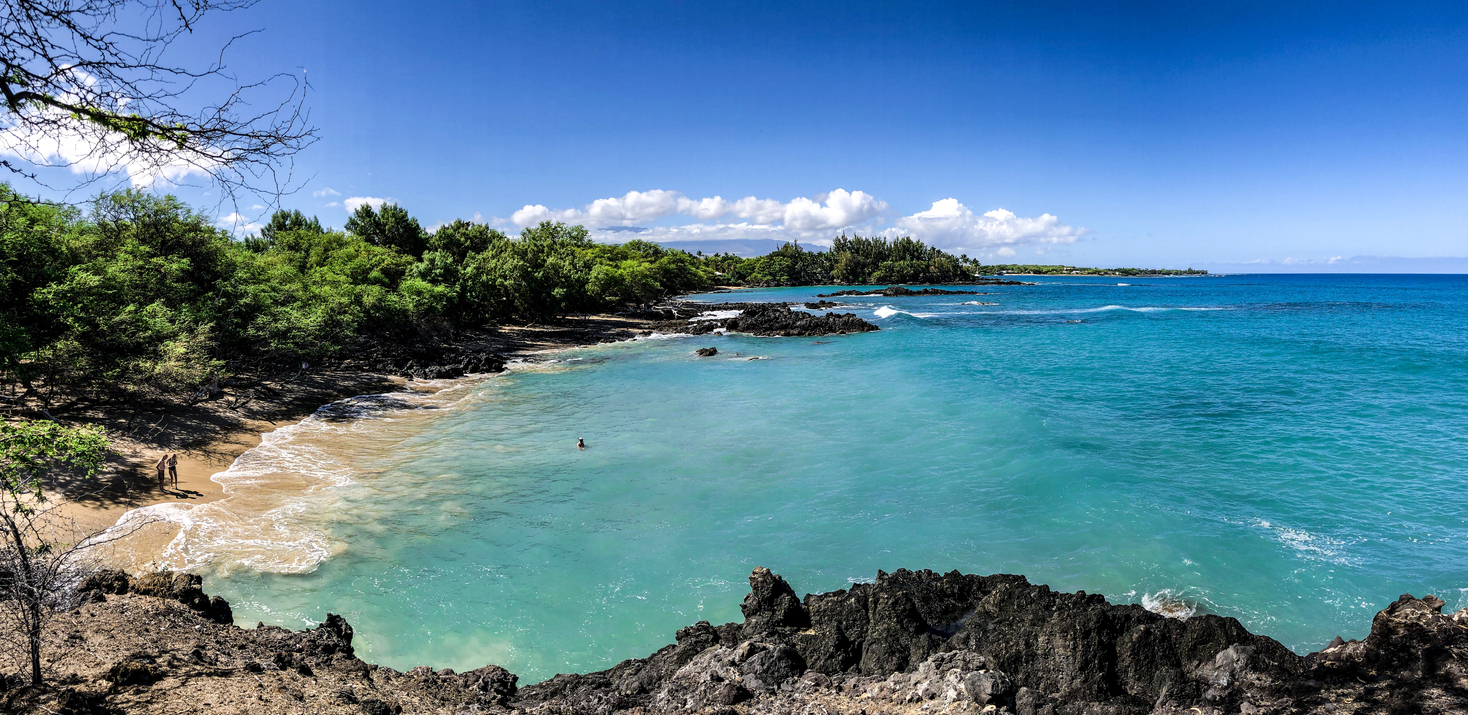 Just down the road, Waialea Bay or “Beach 69” tends to be more accessible and less crowded than nearby Hapuna Beach. This site was designated a marine life conservation district in 1985 and hosted beautiful reefs. Winter tends to be the season when the ocean is calm, and visibility is improved. The bay also has trees along the shore for shade from the sun on those hot summer days. In the winter, the sand tends to erode out, and stronger surf yields low visibility and less safe snorkeling conditions.
Just down the road, Waialea Bay or “Beach 69” tends to be more accessible and less crowded than nearby Hapuna Beach. This site was designated a marine life conservation district in 1985 and hosted beautiful reefs. Winter tends to be the season when the ocean is calm, and visibility is improved. The bay also has trees along the shore for shade from the sun on those hot summer days. In the winter, the sand tends to erode out, and stronger surf yields low visibility and less safe snorkeling conditions.
This bay is more protected and calmer than Hapuna Beach and hosts three different areas that you can snorkel in. Our favorite area is the south end of the bay (left side), accessible from the beach where lots of immature fish frequent the shallower waters close to the rocks. As you swim out towards the point, there are larger coral heads and fascinating reefs to explore. To snorkel the center of the bay, swim out behind the rocky point in the middle and on the other side is a small coral reef that hosts a ton of fish. Here you can circle around a rock outcropping towards the left side in about 7-10 feet of water and see healthy reefs with lots of fish. Towards the north end of the beach, follow the rocky point out from the right side, after which you can explore the coral fingers that stretch out to a comfortable depth of about 15ft.
Fun fact
Humpback whales are commonly spotted from here during the winter months!
Interesting fact
The beach changes with the seasons – winter tides erode the sand, but the white sands return in the summer when the tide is low!
8. Kamakahonu (King Kam Beach)
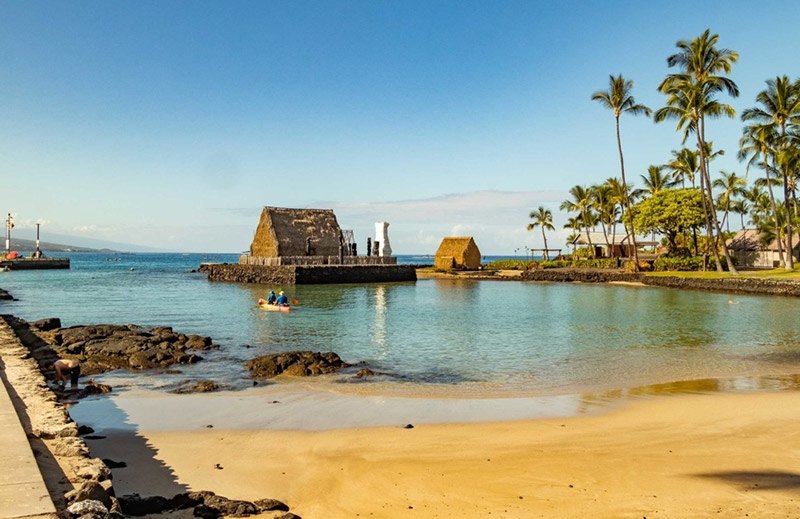
Kamakahonu, or King Kam Beach, is a small beach in the heart of Kailua-Kona and is known for being calm. Enter the water from the sand (not near the rocky pier) and swim out of the bay over to the right. Boats frequent the left side of the bay, so make sure you swim left! The reef has lots of tangs, butterflyfish, and other tropical fish to enjoy. There are also shops in the area where you can rent snorkel gear or organize snorkeling tours around Kona.
Fun fact:
This is a great place for kids to snorkel because it is easily accessible and calm!
9. Mauna Lani Resort
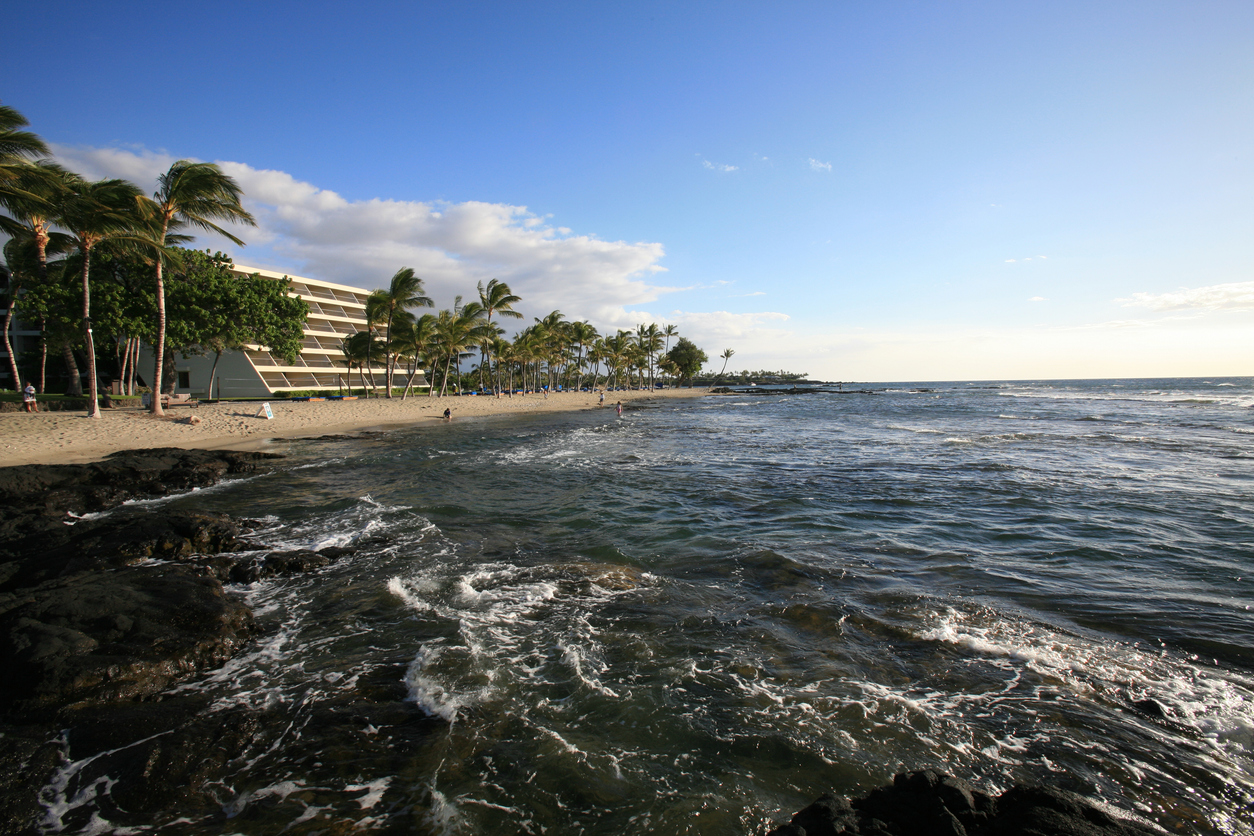
Honokaope Bay
To the far left (south) of the bay, along a shoreline fisherman’s trail is a small black sand beach named “49 Beach.” The water is clean, and the reef is in excellent condition, featuring pinnacles and shallow water to explore.
Makaiwa Bay
To the north of Honokaope Bay, still on the Mauna Lani property, is a small bay known as Makaiwa Bay, with deeper reefs that are also fantastic to explore.
Pau’oa Bay
Slightly further north in front of the Fairmont Orchid Hotel is a protected beach surrounded by large lava rocks with a sandy bottom entry that is perfect for beginners. When low surf conditions arise, snorkeling on the other side of these protective rocks is possible.
Fun fact:
Reef fish, octopus, and the occasional eel are known to frequent this reef!
10. Richardson’s Ocean Park (near Hilo)
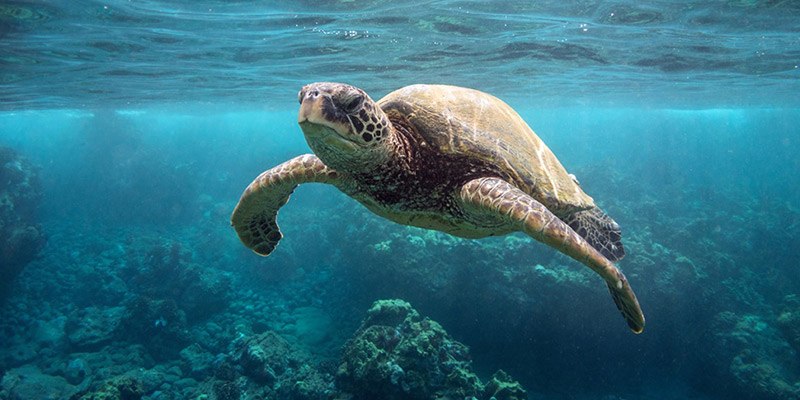
The eastern side of the Big Island tends to have rougher ocean conditions than the west, often leading to lessened visibility and fewer sheltered bays and beaches suitable for snorkeling. However, Richardson’s Ocean Park is sheltered from the surf, with a black sand beach and tide pools. The conditions tend to be calm, and the site itself is pretty shallow hosting lots of tropical fish and sea turtles!
Interesting fact
The sand here is actually comprised of two colors: black from the lava rock, and green from olivine crystals!

